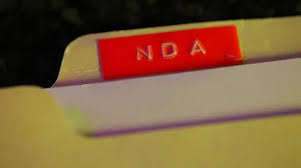Business negotiations in Asia, particularly those involving parties of different nationalities, usually involves several meetings over an extended period of months, as well as an ongoing exchange of communications in between. The process will usually take longer and may seem more drawn out than would be the case if, for example, both parties spoke the same native language and lived in the same city. The more people that are involved in such negotiations, the greater the likelihood of some misunderstanding by someone about what has been discussed or agreed. A helpful tool to ensure that discussions stay focused and moving forward is the Memorandum of Understanding (MOU).
In its simplest form, an MOU serves merely as an agreed summary of previous discussions that have taken place, and/or an agreed statement of future intentions. Whereas a contract is nothing more than enforceable agreement, an MOU is usually not considered to not even constitute a contract because they typically lack the element of consideration (i.e., and exchange of value), since discussions will not usually have progressed that far yet. That is not to say, however, than an MOU would be of no value if negotiations collapsed or if litigation between the parties arose for any reason. In fact, the more detailed and comprehensive the record is, the more likely that disputes will not arise and that negotiations will remain on track.
Essential elements of any MOU will always include a fundamental recitation of the who, what, where, why, and when about the parties and their discussions. This in itself provides a further opportunity for due diligence by confirming through publicly available information certain background information confirming the identity of the parties, the location and extent of their business operations, and in some instances their financial positions. Such research can sometimes reveal discrepancies between information that may have been conveyed during the negotiations and information on record with the authorities. This provides a useful opportunity for clarification.
An MOU should further reference the various performance expectations contemplated by and for each negotiating party, and confirm whether their individual contributions towards the common initiative shall remain under their respective ownership(s), or whether they will instead be shared collectively? For that matter, are the negotiations expected to involve or result in a formal partnership between the parties, or the creation of some new legal entity altogether? Or do the parties merely contemplate their coordinated pursuit of some commercial objective? The MOU is the place for such clarification.
Its also important that an MOU clearly specify the parties’ intentions concerning the division of proceeds, if any, resulting from their initiative. Will revenues be divided on a gross basis, from the first proceeds received, or on a net basis following the recovery of some specified amount(s)? Similarly, what are the parties understanding and expectation concerning the payment of interim or ongoing expenses? Will each party be responsible for their own expenses for their individual contributions, or will the cost of such investment(s) be shared between the parties in some way?
What conditions, if any…particularly those beyond the negotiating parties’ control…need to be met as a condition for continued negotiations, and what happens if they are not? What are the next steps to then be taken by each party, and the expected dates for their performance? Assuming the conditions are met, what is the target date for concluding negotiations and commencing operations? What financial targets or other key performance indicators will be used to measure the success of the initiative?
There is no specific juncture during the negotiations at which an MOU must be prepared; it can be done any time following the first meeting and it is possible to structure it as a fluid, living document subject to ongoing revision as the negotiations progress. But at some point, it will be advisable for the parties to execute a more formally denoted contract, particularly at the point where money is to be exchanged between them. Until then, an MOU can help maintain momentum while developing your business in Asia.
(c) 2023 Frank Rittman




